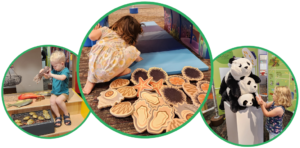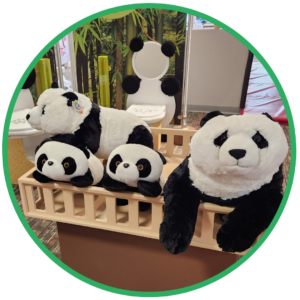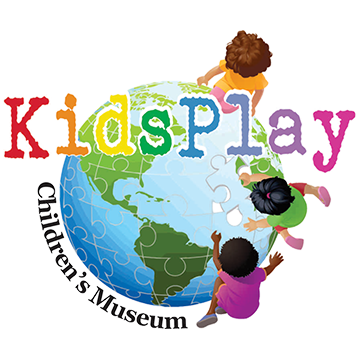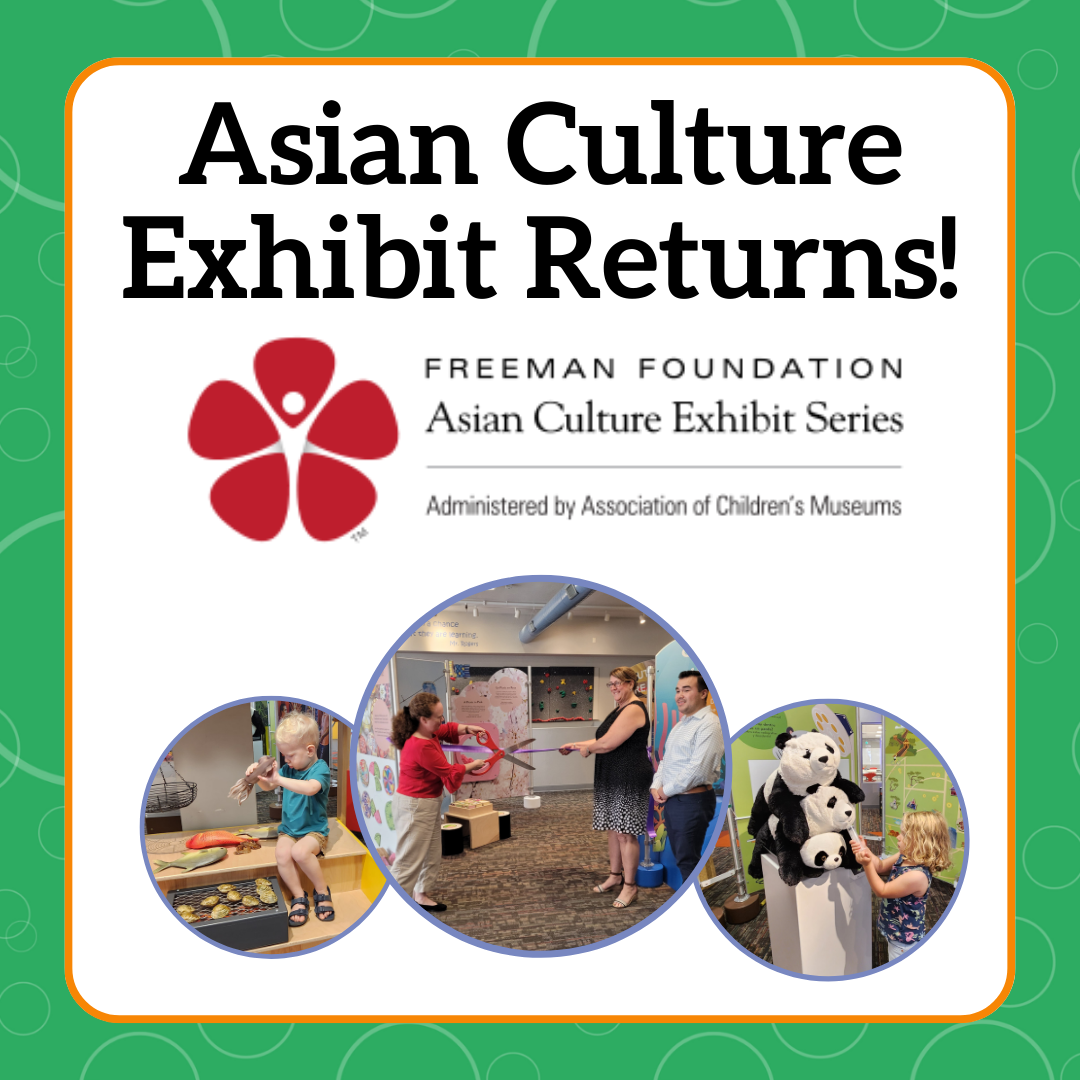Asian Culture Exhibit is Back!
KidsPlay is excited to announce the return of a new and improved “Play”, an exhibit from the Freeman Foundation Asian Culture Exhibit Series (FFACES) designed to help children learn about and understand Asian cultures!

“Play” was designed for children and families to explore pop-up book-like structures portraying different types of play – roleplay, narrative, symbolic, and constructive – around Korea, China, and Japan. Immersive fun activities help anchor and highlight different cultural elements of East Asia and help us to educate on the richness and diversity of Asian cultures.
In 2022, KidsPlay was honored to be selected by the Association of Children’s Museums (ACM) to host a prototype of “Play”. Visitors like you were able to test-play early exhibit concepts and designs! In early 2023 the “Play” prototype was returned to exhibit fabricator Ravenswood Studio with feedback and suggestions from KidsPlay guests and staff. The exhibits were redesigned and improved before being sent back to museums.
Museum Director Eileen Marriott shares that “Our team was thrilled to be a part of the prototyping process for this exhibit. We can now see how our feedback and the feedback from our visitors was incorporated to create a more playful and impactful exhibit for other museums nationwide”
The final version of “Play” is now at the Museum and ready to be explored!
- In the South Korea exhibit, dive deep into the under-the-sea area and learn about Jeju Island’s Haenyo divers, who are able to search deep into the ocean to gather fresh seafood. Don’t miss the immersive Korean fish market modeled after the famous Jagalchi Fish Market in Busan!
- In the China exhibit, work at a panda sanctuary and feed the giant pandas bamboo, care for the baby pandas in the nursery and sell traditional Chinese street food at a busy food stall.
- In the Japan exhibit, participate in hanami (flower viewing) with a yummy Japanese cherry blossom picnic or practice the traditional craft of kigumi, using blocks and beams to join wood together without any nails or screws.

______________________________________
Visited the exhibit and need some ideas to keep the learning going at home? Check out some ideas below!
- Read – Explore and guide children through Asian literature, allowing them to see images depicting culture and hear stories of tradition and differing ways of life. Read a children’s book featuring characters from Asia or created by Asian authors or illustrators. Books are a great way to introduce children to new cultures, celebrations, and people’s unique life experiences. The National Consortium for Teaching about Asia (NCTA) has an extensive resource of children’s literature categorized by different grades—including K-3 and 3-5—with a focus on narratives from China, Japan, and South Korea. Ask your local librarian if they have these titles for your next storytime!
- Explore – Go on a virtual adventure through Asia to learn about its diverse countries and cultures. No need to pack your bags for these virtual adventures! The Asia Society Texas Center has designed these at-home lessons and activities to help spark your child’s curiosity about Asia and begin to foster cultural empathy while exploring seven diverse Asian cultures.
-
Celebrate – Discuss the significance of an upcoming cultural celebration in Asia and participate in a related activity. Make harvest prints to celebrate Chuseok in September or a red envelope to celebrate the Lunar New Year in February—with the Asian Art Museum’s extensive group of resources, people of all ages can participate
in cultural celebrations from across Asia all year long. Be sure to educate your young learner about each celebration and its cultural importance before engaging in an art activity, virtual storytelling, recipe making, and more! -
Discover – Learn some of Japan’s most popular stories in a mini kamishibai (“paper play”). Children of any age will be mesmerized by the beautiful imagery and unique characters in Japan Society’s kamishibai mini library. These paper plays featuring Japanese-English bilingual narration will open your child’s eyes and ears to the Japanese language and culture through stories about folklore heroes, magical princesses, and brave young fishermen!



